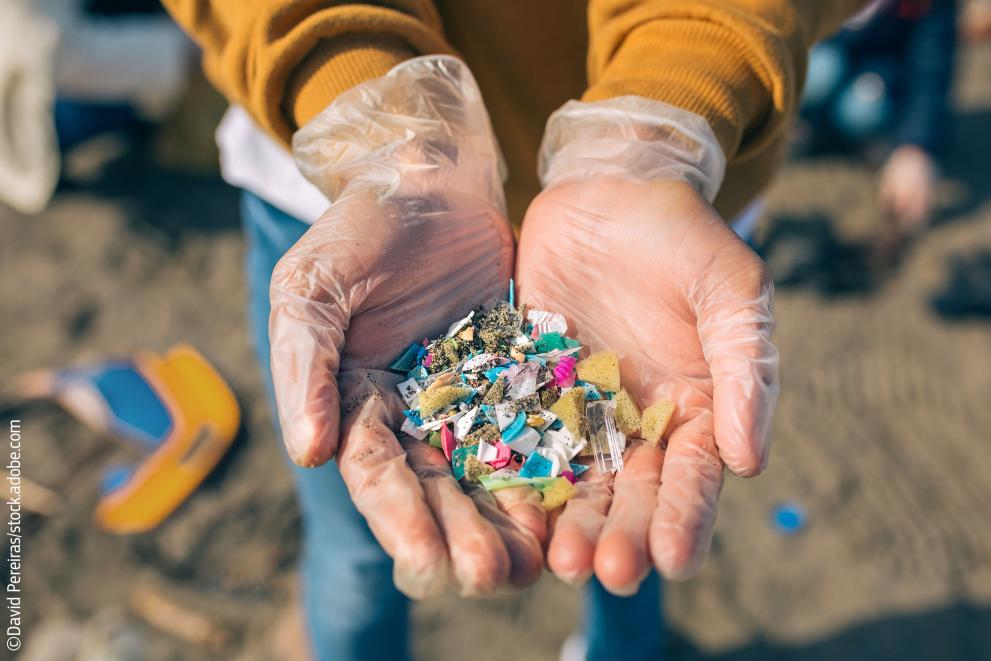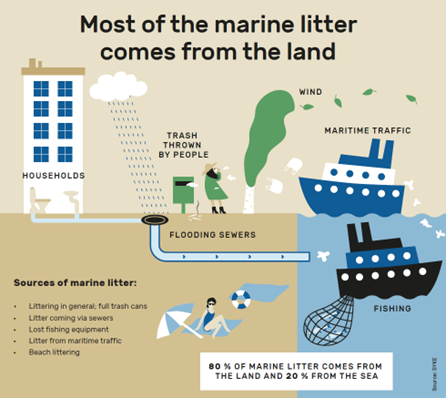
Knowing where marine litter comes from is fundamental to achieve a healthy marine environment. And this is exactly what the Finnish EU-funded RoskatPois! (LitterAway!) project set out to do. It identified the sources and quantities of marine litter in the Finnish marine environment and how it got there, so as to be able to explore how to reduce marine litter at source. The project was coordinated by the Finnish Environment Institute (SYKE), and run together with the Natural Resources Center (Luke) and the Finnish Transport and Communications Agency (Traficom).
Most of marine litter comes from the land
In Finland, like so many other places, information on marine litter used to be scarce. It was also clear that if concrete action was to be taken, more information was needed. The LitterAway! project therefore included an extensive mapping exercise where marine litter was collected from 14 urban, natural and intermediate seashores around the coast of Finland. Every piece of litter larger than 2.5 cm in size found in the study areas (each measuring 100 m x 10 m) was counted and classified according to the material and intended use.
A questionnaire was also sent to the coastal city authorities to help assess the sources and routes of the marine litter. On that basis, inadequate rainwater treatment was considered to be the main cause of marine litter in coastal towns. In medium-sized cities, frequent sewage flooding was identified as another significant factor. In larger cities with more than 100,000 people, other important contributors were the disposal of snow removed from the streets into the sea, too few bins for cigarette butts, construction and demolition sites.
The LitterAway! project created a good methodology for identifying sources of marine litter and the routes by which it reaches the sea. Thanks to the extensive research, Finnish authorities now have a better understanding of the different types of litter and the most significant sources. The project highlighted some unexpected results: for example, that one significant source of litter ending up at sea is artificial turf used on sports fields. With this valuable information a roadmap towards a litter-free marine environment has been developed.
Awareness raising was also part of the LitterAway! project. It included a Marine Litter Challenge, where citizens were invited to send in their ideas on how to cut marine litter. This proved to be a good catalyst for raising public awareness about marine litter problems, and 93 proposals were submitted.
Laying the foundations for the Finnish Marine Strategy 2022–2027
The funding from the European Maritime and Fisheries Fund made it possible to gather the comprehensive information needed for future action to address and solve the issue. The project achieved its objectives, and extensive data on littering has been collected for the first time. According to the Finnish Ministry of the Environment, "information on the most significant sources and pathways of marine litter is necessary in order to tackle litter and target measures to the right places.”
Thanks to this project, the knowledge obtained has fed into some of the new measures included in the programme of measures of the Marine Strategy in Finland 2022-2027. Based on the new knowledge, Finland has included 11 measures to improve waste and waste water management, and to reduce litter and micro-plastics loads from shipping, marinas, road transport, agriculture and artificial grass. The measures also aim to accelerate the management of abandoned glass-fibre boats as waste, and to reduce the amount of litter carried into the sea by storm water and as a result of snow dumping.
More information
Website of the project
Videos
Details
- Publication date
- 22 March 2023
- Author
- Directorate-General for Maritime Affairs and Fisheries





